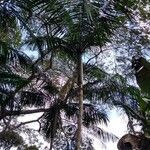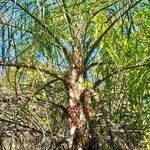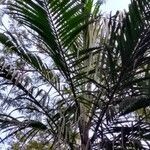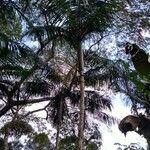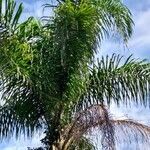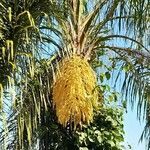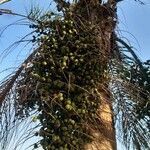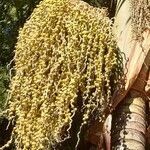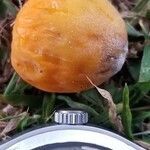Solitary palm to 15 m tall; trunk 40–50 cm diam. Leaves 7–15, to 4.4 m long. Pinnae 150–250 each side of rachis, irregularly arranged in sympodial clusters of 2–5, in 2–several planes, to 90 cm long, dark green. Inflorescence to 1.5 m long; peduncular bracts to 150 cm long, to 14 cm wide. Staminate flowers 7–16 mm long. Pistillate flowers 4.5–6 mm long. Fruit ovoid, 20–30 mm long, 10–20 mm diam., yellow to orange; mesocarp fleshy; endocarp to 5 mm thick, irregularly shaped in cross section. Seed 8–12 mm long, 6 mm wide, gibbous-uncinate; endosperm irregularly shaped in cross-section with a small internal cavity.
Stems solitary, smooth, with conspicuous nodal rings. Leaves ca. 5 m. Fruits 3.0--3.5 cm, ovoid, yellowish orange; endocarp ovoid, brown, with 3 germination pores. 2n = 32.
